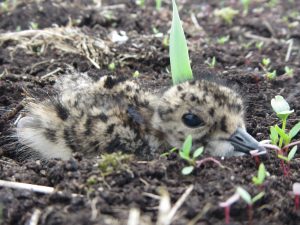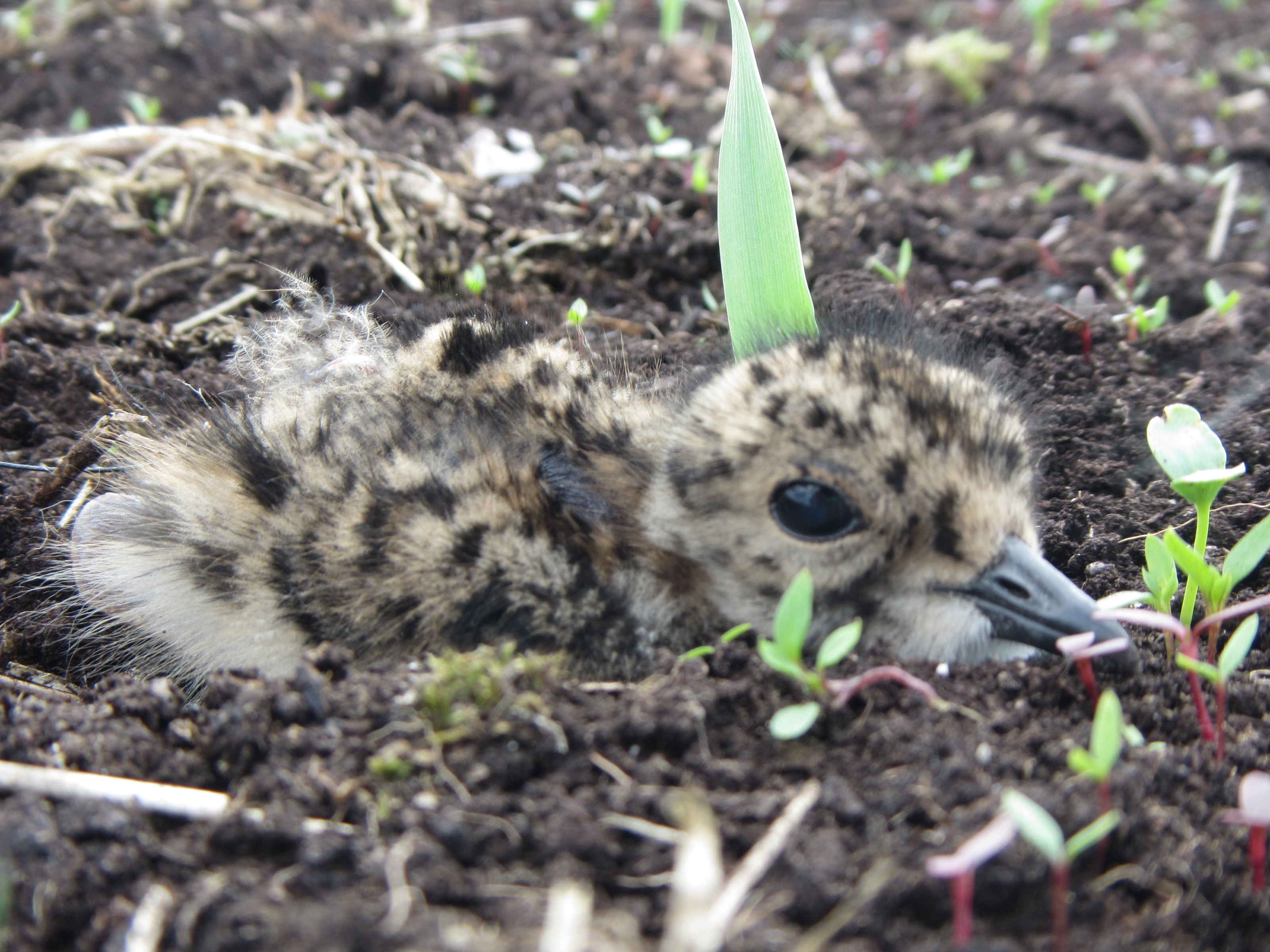Trust’s lapwing chick survival study features in the Irish Examiner
This article appears in the Irish Examiner dated Friday, April 29, 2016.
The original full article can be read here:
A farmer, walking his fields at this time of year, might come upon a clutch of four little eggs, their pointed ends arranged neatly together in a scrape on the ground, writes Richard Collins
These ‘Easter’ eggs were eaten long ago during the seasonal festivities. Their provider, however, was no supernatural visitor but a familiar countryside bird, known as the ‘pee-wit’ ‘green plover’ or ‘lapwing’.

This pigeon-sized green black and white wader calls evocatively as it flaps about on dark rounded wings. A wetland bird with a secret yearning to be a thrush, it stalks insect larvae and worms on farmland. In winter, Irish lapwings are joined by visitors from Britain and mainland Europe. Flocks, tens of thousands strong, were common here but not any more.
The lapwing has fallen on lean times; numbers have declined steadily over the last 40 years. There were 88% fewer breeding pairs in 2008 than there had been in 1993. Kieran Buckley of the National Parks and Wildlife Service (NPWS), who has been studying lapwings, says that ‘we don’t appreciate how bad things are here’.
Changes in land use and farming practices are blamed for the decline but Kieran fears that the raiding of nests by foxes, rats, stray cats, hooded crows, and magpies is also a factor. Predation, he thinks, could be knocking back any chance of recovery. There’s just not enough habitat, he says, and the little that’s left acts as a magnet for predators.
Two years ago, Kieran and his team began studying the survival of lapwing chicks from nests in a 75ha area of cut-away bog owned by the NPWS at Boora, County Offaly. During the 2014 and 2015 nesting seasons, tiny radio transmitters were fitted to chicks in 41 lapwing broods. The youngsters were, on average, nine days old when ringed. Batteries had a life of about 30 days. Radio signals from the units were picked up on portable receivers using handheld directional aerials.
A unit worn by a chick falling victim to a fox might still transmit after it had passed through the predator’s gut. Each youngster was radio-tracked three or four times per week, revealing the types of terrain it preferred and how far it had moved from the nest. Lapwing chicks normally fledge 35 to 40 days after hatching.
Data from this first phase of the project have now been analysed. The results are revealing. Less than one chick (0.86) fledged per brood. Success rates were similar, irrespective of the terrain in which a nest was located. Some chicks remained close to the nest while others moved considerable distances. Moving did not appear to affect a chick’s survival prospects.
Predation was indeed the major threat to the birds; all but one of the chicks recorded dead had been killed by a predator. Foxes were the main culprits, accounting for 47% of deaths, three adult foxes being responsible for most of the carnage. Predatory birds killed 32% of victims while the identity of the killer could not be determined in 16% of cases. Three-day-old chicks were taken. So were 28-day-old ones.
The overall survival rate of chicks might seem to be disastrously low but, in fact, it’s high enough to compensate for the deaths of adult birds in the population and increase the number of breeding pairs. However, the situation at Boora is not representative of lapwing sites elsewhere.
The lands there are managed for the conservation of grey partridges. With foxes and grey crows being systematically removed, it’s a relatively safe haven for nesting lapwings; 122 broods were recorded during the study period. Only if similar control measures are taken at breeding sites elsewhere in Ireland, can lapwings hope to have a future here.
The research at Boora is supported by Dublin Zoo, Fota Wildlife Park and the NPWS. Kristina Abaruite, Éabhin Byrne, Therese Kelly, Shane Sweeney and Kieran Buckley were members of the research team.
© Irish Examiner Ltd. All rights reserved
